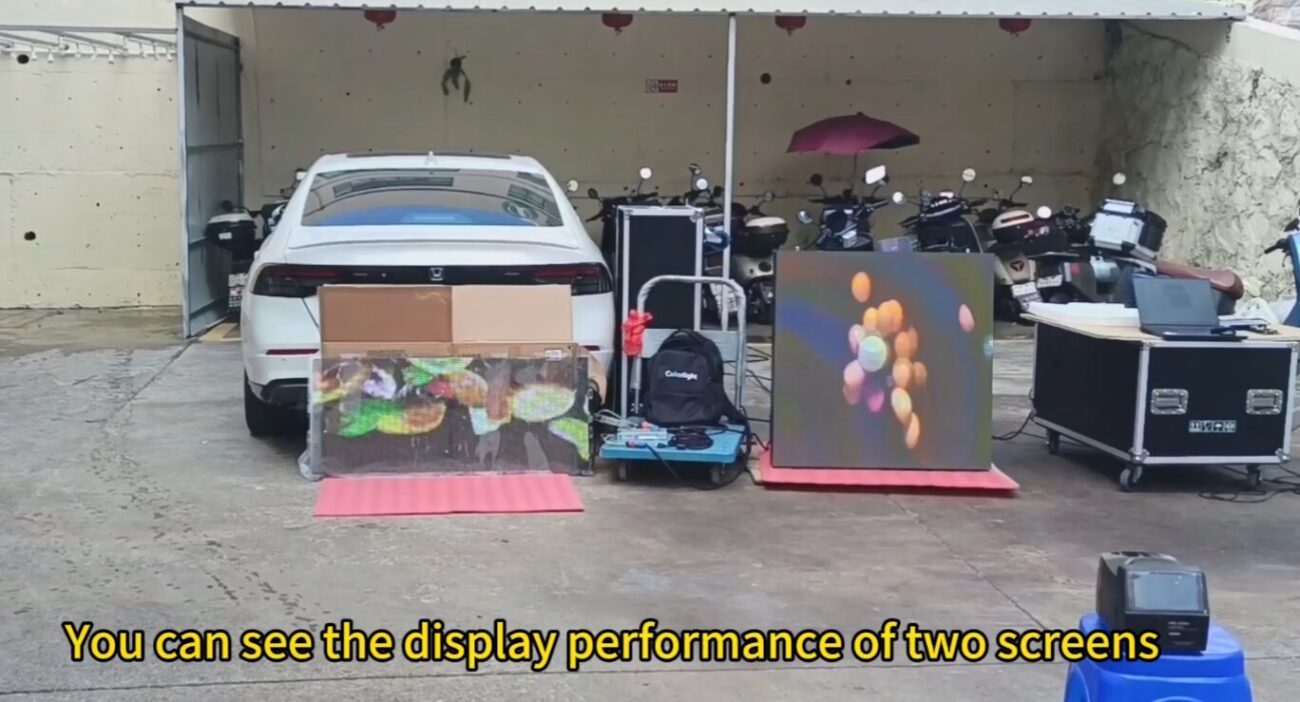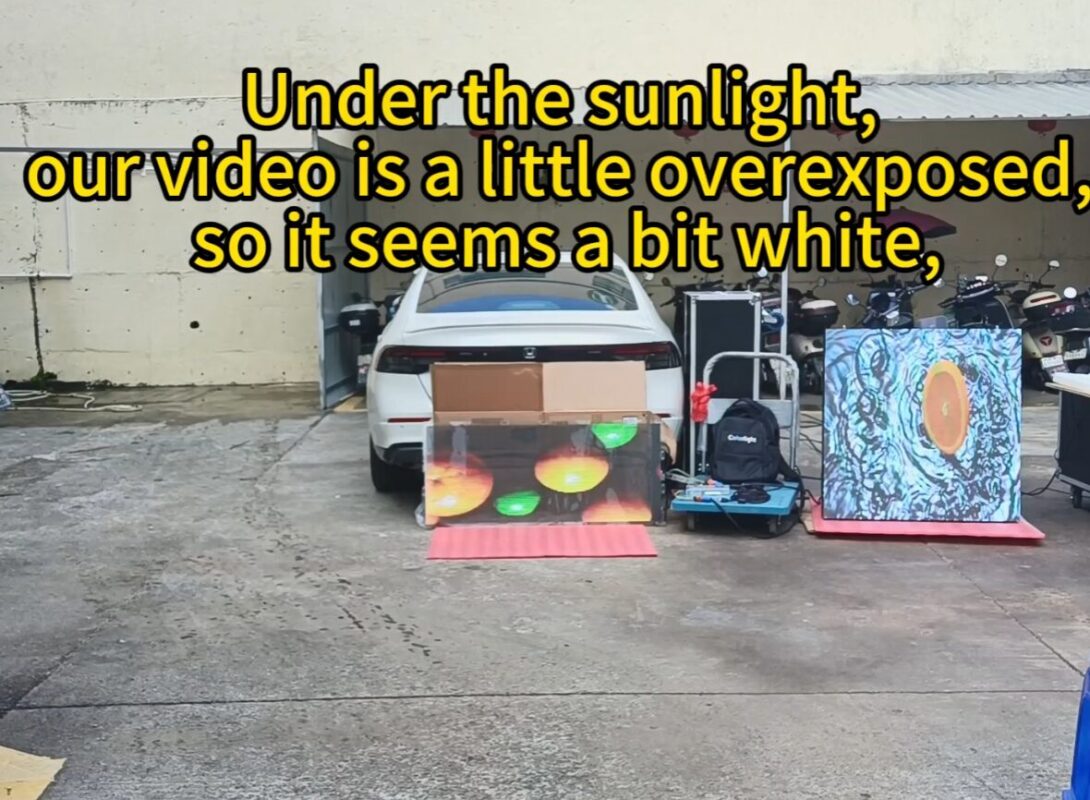When purchasing LED displays, “brillo” is a core parameter that cannot be ignored—but did you know? El “5000pavo” o “4000pavo” marked on datasheets may be worlds apart from the actual brightness delivered in the field. Products like transparent screens y outdoor screens, which have extreme demands for environmental adaptability, are especially prone to these discrepancies. If you order without seeing a real-world LED display brightness test, you’re very likely to be disappointed: maybe your display is unreadable under direct sunlight, or brightness drops sharply in high temperatures, ultimately affecting project results. Today, using real client test cases and measured data, we’ll reveal why “real brightness testing” is so critical.
Tabla de contenido
Palanca1. Why Datasheet Brightness Isn’t Trustworthy—Real Scenarios Are the Ultimate Test

LED displays withstand 70°C–90°C.

Outdoor Transparent COB
2. Field Test Report: Performance Differences Among Transparent, Exterior, and Indoor Screens
Take our recent LED display brightness test in Shenzhen: The client needed an “outdoor transparent screen and standard outdoor screen,” with direct noon sunlight (11 am, over 30°C) as the test environment—rejecting all “lab data.” Here is the full test process and core results for reference:
Key Data: Dual Challenges of Brightness & Temperatura (Directly Linked to Lifespan & Reliability)

Transparent Screen Display Performance Under Bright Light
| Product Type | Measured Brightness | Surface Temp | Notable Performance |
|---|---|---|---|
| Outdoor Transparent COB | 4000pavo | 74°C | Clear image in sunlight, balance of transparency/brightness, over 90% color fidelity |
| Outdoor Standard | 5500pavo | 89°C | Text/videos remain clear in glare, with less than 5% brightness drop after 1 hour |
| Indoor Standard | 500pavo | 38°C | Almost unviewable in sunlight, only outline visible—proving indoor screens aren’t suitable for outdoor use |
3. Key Takeaway: Different Scenes Require Radically Different Brightness
4. Real Testing Reveals More Than Just Brightness—Hidden KPIs Matter
The value of “real brightness testing” isn’t just the numbers. It exposes temperature tolerance, brightness decay rate, y color stability, all of which matter for long-term ownership costs:
5. Guidance for Buyers: How to Demand Real Brightness Testing from Manufacturers
-
Specify the scene: Test in the actual application site—if for outdoor ads, insist on noon sunlight (not simulated lighting); for mall screens, test with natural+indoor lighting.
-
Set test times and require proper tools: Testing must be in “extreme hours” (summer, noon), use professional light meters (P.EJ., Konica Minolta luminance meter)—don’t accept eyeball estimates.
-
Monitor temperature: Require surface temp readings during the test (outdoor ≤90°C, transparent ≤80°C).
-
Keep records: Get test videos and screenshots (with time, location, device info) attached to contracts—if real-world use fails to match, you’ll have proof for warranty or claims.



